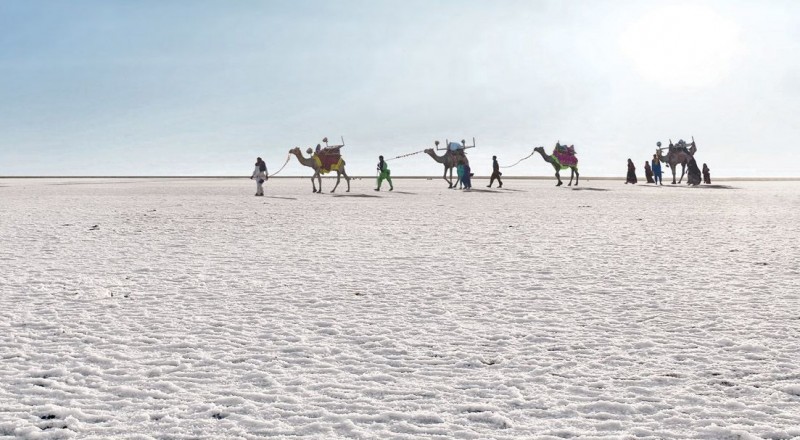
The Kutch Desert, located in the westernmost part of India, is a mesmerizing expanse of arid land known for its distinctive feature—white sand. Unlike typical desert landscapes with golden or reddish sand, the Kutch Desert stands apart due to its unique and ethereal white sands. In this article, we will explore the reasons behind the remarkable whiteness of the Kutch Desert sand. By delving into the geological, environmental, and climatic factors at play, we can uncover the secrets behind this natural phenomenon. Let's embark on a journey to understand why the sand in the Kutch Desert is white.
Geological Origins
The geological history of the region holds key insights into the composition of the Kutch Desert sand. The region was once covered by the Arabian Sea and experienced extensive deposition of marine sediments over millions of years. As the sea gradually receded, the sediments were exposed to the elements, leading to the formation of the desert. The primary geological factor contributing to the whiteness of the sand is its composition, which is predominantly made up of calcium carbonate.
Calcium Carbonate and Shell Fragments
Calcium carbonate, commonly found in shells, corals, and limestone, plays a significant role in the whiteness of the Kutch Desert sand. Over time, marine organisms deposited shells and skeletal fragments on the seafloor. As these fragments accumulated and solidified, they transformed into limestone. Subsequent erosion and weathering of the limestone released calcium carbonate particles into the desert sand, giving it a characteristic white hue.
Aeolian Processes and Sand Sorting
Aeolian processes, which involve the action of wind, play a vital role in shaping the texture and composition of desert sands. In the Kutch Desert, strong winds called the "Loo" transport sand particles across vast distances. During this transportation, the wind selectively sorts and segregates sand grains based on their size, shape, and density. The sorting process separates heavier, darker particles from the lighter, whiter calcium carbonate particles, leading to the concentration of white sand in certain areas.
Weathering and Surface Bleaching
Weathering processes contribute to the ongoing whiteness of the Kutch Desert sand. Over time, exposure to wind, water, and temperature variations breaks down rocks and minerals, gradually eroding and releasing calcium carbonate particles into the sand. Additionally, the extreme arid conditions and high temperatures of the desert promote surface bleaching. Continuous exposure to sunlight and evaporation of surface moisture result in the removal of fine-grained particles and the concentration of white sands on the surface.
Reflectivity and Heat Dissipation
The white sand of the Kutch Desert offers unique reflective properties and heat dissipation characteristics. Its bright color reflects sunlight, reducing the absorption of heat by the sand and creating a relatively cooler environment compared to other desert regions. This quality makes the Kutch Desert sand more comfortable for walking and minimizes the risk of heat-related injuries.
Environmental Factors
The environmental factors in the region contribute to the whiteness of the Kutch Desert sand. The Kutch region experiences low precipitation, limited vegetation cover, and minimal organic matter. These conditions allow for the visibility and dominance of the white sand, enhancing its aesthetic appeal and creating a stark contrast with the barren landscape.
The whiteness of the sand in the Kutch Desert is a result of a combination of geological, environmental, and climatic factors. The presence of calcium carbonate from marine sediments, aeolian processes, weathering, surface bleaching, reflectivity, and environmental conditions all contribute to the unique and enchanting white sands of the Kutch Desert. Understanding the scientific processes behind this natural phenomenon adds to the allure of the region and deepens our appreciation for the wonders of the natural world. As we continue to explore and learn about the diverse landscapes of our planet, the Kutch Desert stands as a fascinating example of nature's artistry.
Gujarat's Treasures: Exploring the Top 10 Famous Destinations in the Vibrant State
Exploring the Majestic Girnarji: A Sacred Mountain in India
Gujarat High Court to deliver verdict on Rahul Gandhi’s plea today